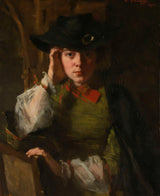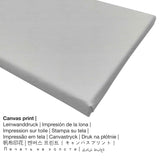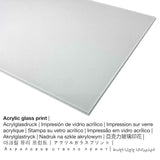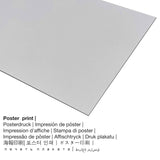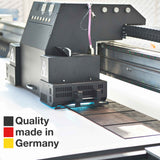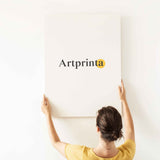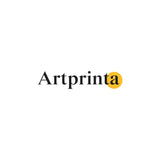Thérèse Schwartze, 1902 - Eserese nke Lizzy Ansingh - ọmarịcha nka.
Ụtụ gụnyere. Mbupu gbakọrọ na ndenye ọpụpụ.
Ozi banyere ngwaahịa a
The nkà nke oge a sere Portrait of Lizzy Ansingh was created by the painter Thérèse Schwartze in 1902. N'ịga n'ihu, ihe osise a bụ akụkụ nke Rijksmuseum's nchịkọta. Site n'ikike nke Rijksmuseum (public domain).Besides, the artpiece has the creditline: . Furthermore, alignment of the digital reproduction is Eserese ya na oke onyonyo nke 1: 1.2, nke pụtara na ogologo bụ 20% mkpụmkpụ karịa obosara.
Nkọwa zuru oke site na webụsaịtị ihe ngosi nka (© - site na Rijksmuseum - www.rijksmuseum.nl)
Lizzy Ansingh and Thérèse Schwartze belonged to the Amsterdamse Joffers, a group of women painters active around 1900. Schwartze was the undisputed star and enjoyed great success with her fashionable society portraits. This informal likeness of her niece Lizzy Ansingh is one of her best. The contrast between light and dark convey intimacy, and the swift, vigorous brushstrokes and red accent on the bright green dress radiate power.
Tebụl a haziri ahazi nke ọrụ nka
| Aha ọrụ nka: | "Portrait of Lizzy Ansingh" |
| Nhazi nka nka: | sere |
| Category: | nkà nke oge a |
| Time: | 20th narị afọ |
| Afọ okike: | 1902 |
| Afọ nka: | karịa afọ 110 |
| Ụlọ ihe ngosi nka / ebe: | Rijksmuseum |
| Ebe ngosi nka: | Amsterdam, Netherlands |
| Ebe nrụọrụ weebụ ihe ngosi nka: | www.rijksmuseum.nl |
| Ikikere nke ihe osise: | ngalaba ọha |
| Site n'aka: | Rijksmuseum |
Tebụl onye na-ese ihe
| Ihe nkiri: | Thérèse Schwartze |
| Gender: | nwanyi |
| Obodo onye nka: | Dutch |
| Ọrụ onye na-ese ihe: | onye na-ese ihe |
| Country: | mba netherland |
| Nhazi nke onye nka: | omenkà nke oge a |
| Afọ ọnwụ: | 67 afọ |
| A mụrụ: | 1851 |
| Amụrụ na (ebe): | Amsterdam, North Holland, Netherlands |
| Nwụrụ n'afọ: | 1918 |
| Nwụrụ na (ebe): | Amsterdam, North Holland, Netherlands |
Họrọ ụdị ngwaahịa ngwaahịa gị
We offer a range of various sizes and materials for every product. You can pick your preferred size and material among the subsequent alternatives:
- Mbipụta ọla (aluminium dibbond): This is a metal print manufactured on aluminium dibond material with an impressive depth - for a modern look and a non-reflective surface. Colors are luminous, the fine details appear very clear, and you can feel a matte appearance of the fine art print.
- Mpempe iko acrylic na-egbuke egbuke: A glossy acrylic glass print, often referred to as a print on plexiglass, will transform the original into marvellous décor. Moreover, it makes a distinct alternative to dibond or canvas prints. Your favorite work of art will be printed with the help of state-of-the-art UV printing machines. The major advantage of a plexiglass print is that sharp contrasts as well as small image details will be identifiable thanks to the precise gradation of the picture. Our plexiglass protects your custom art replica against sunlight and external influences for decades.
- Akwụkwọ mmado ebipụtara (ihe kwaaji): The poster print is a printed canvas with a granular surface finish. The poster print is perfectly suited for placing your art copy using a custom-made frame. Please bear in mind, that depending on the size of the poster we add a white margin of something between 2-6cm around the work of art to facilitate the framing.
- Mbipụta kwaaji: A printed canvas, which should not be mistaken with an artwork painted on a canvas, is a digital copy printed directly on canvas fabric. A canvas creates the particular effect of three-dimensionality. A canvas print of your favorite artwork will allow you to transform your custom into a large size collection piece like you know from galleries. Hanging a canvas print: A canvas print has the advantage of being relatively low in weight. That means, it is quite simple to hang up your Canvas print without extra wall-mounts. Therefore, a canvas print is suitable for all kinds of walls.
Ngwaahịa a
| Nkewa ngwaahịa: | nka nka |
| Usoro mmeghari: | mmeputakwa n'ụdị dijitalụ |
| Produzọ mmepụta: | Mbipụta UV / dijitalụ |
| Nlụpụta: | arụpụtara na Germany |
| Stockdị ngwaahịa: | a na-achọ |
| Ihe eji eme atụmatụ: | nchịkọta nka (mmeputakwa), foto mgbidi |
| Ndozi onyonyo: | nhazi ihe osise |
| Oke akụkụ: | 1: 1.2 - ogologo: obosara |
| Nkọwa nha onyonyo: | ogologo bụ 20% mkpụmkpụ karịa obosara |
| Akụrụngwa dị: | acrylic glass print (nwere ezigbo mkpuchi iko), mbipụta akwụkwọ mmado (akwụkwọ kwaaji), mbipụta ọla (aluminium dibond), mbipụta akwụkwọ. |
| Ọdịiche dị n'okirikiri akwa akwa akwa (akwa akwa): | 50x60cm - 20x24", 100x120cm - 39x47" |
| Mbipụta iko acrylic (nke nwere ezigbo mkpuchi iko): | 50x60cm - 20x24", 100x120cm - 39x47" |
| Mpempe akwụkwọ mmado (akwụkwọ kwaaji) nha: | 50x60cm - 20x24", 100x120cm - 39x47" |
| Nhọrọ nha nha nke aluminom dibond (ihe aluminom): | 50x60cm - 20x24", 100x120cm - 39x47" |
| Nhazi mbipụta nka: | biko buru n'uche na emebeghi mmeputakwa a |
Disclaimer: We try all that we can in order to depict the art products with as many details as possible and to display them visually. Nevertheless, the pigments of the printing material, as well as the print result might diverge somehwat from the presentation on the device's screen. Depending on your settings of your screen and the nature of the surface, color pigments can unfortunately not be printed as exactly as the digital version depicted here. In view of the fact that all the art reproductions are printed and processed manually, there may as well be slight discrepancies in the motif's exact position and the size.
© Nwebiisinka nke, Artprinta (www.artprinta.com)

